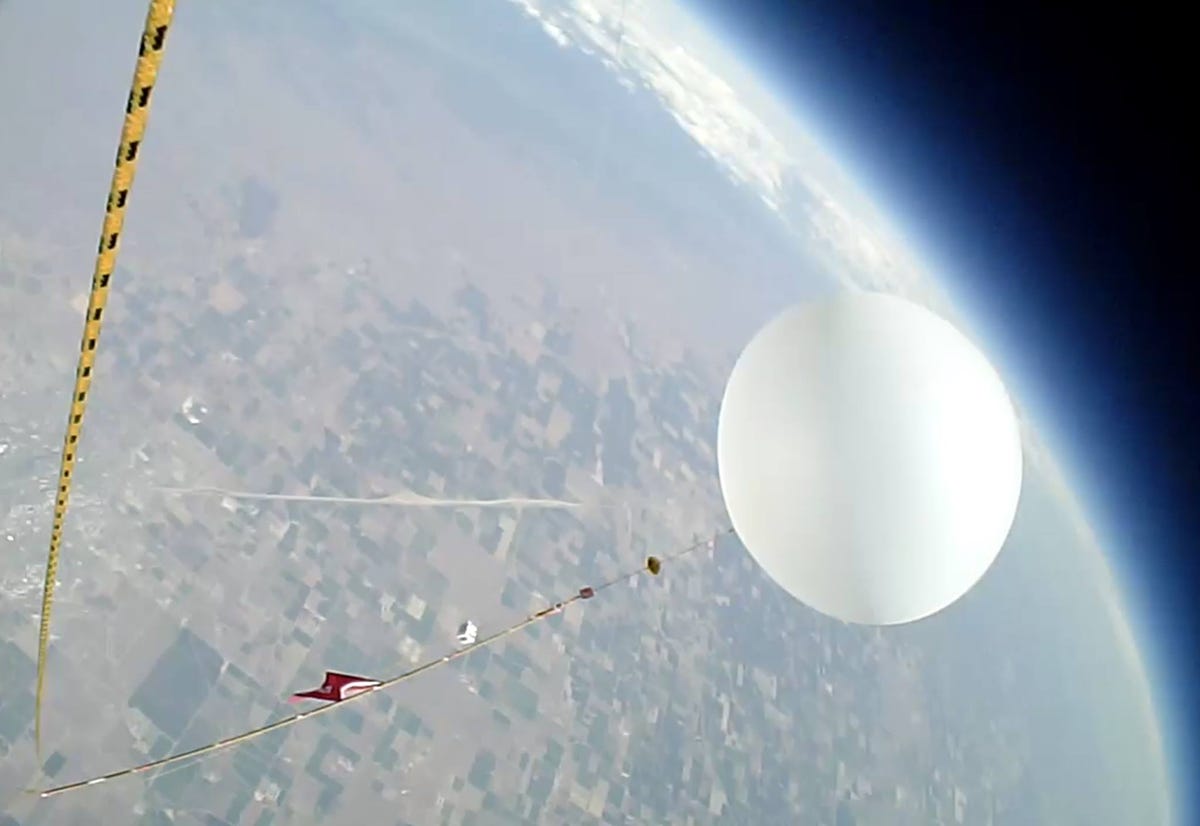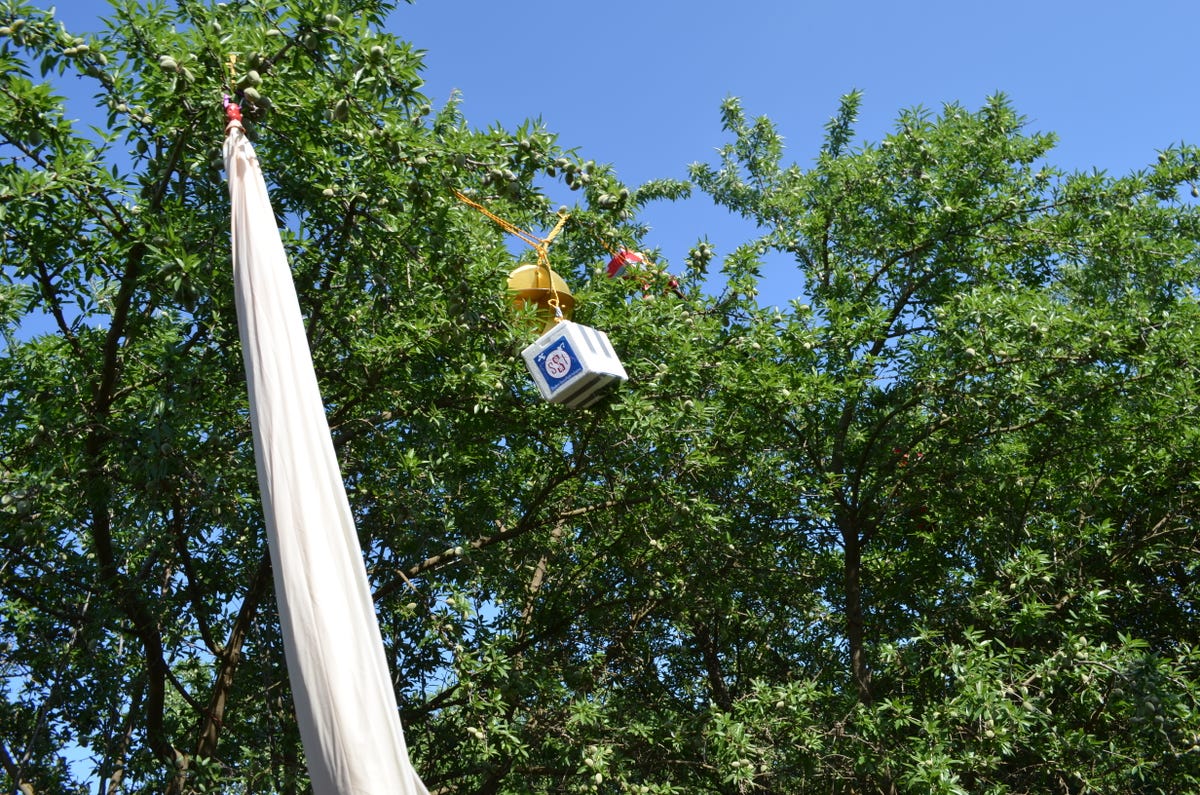Taking on the sky with high-altitude balloons (pictures)
A group of high-altitude balloon enthusiasts from Stanford successfully captured what they think is the first-ever photo of a balloon, the horizon, and space -- from above. And they were under budget. CNET was on hand to see how it worked.

Balloon space and Earth
PATTERSON, Calif.--The goal was simple: Take a photograph of a high-altitude balloon, the Earth, and space from a second balloon directly above.
It may sound simple, but a group of Stanford students participating in the first-ever Global Space Balloon Challenge last weekend thinks it had never been done before.
Until now. The team of 10 students successfully launched their design, capturing the image they wanted, and now they hope to win the Best Photograph category of the global challenge.
Perfectly stable
The Stanford team's design was based on the idea that a long rod would keep two balloons separate, with one floating higher than the other. A camera suspended in a payload box underneath the higher balloon would take the picture. But in order to work, it would have to stay stable, something the team wasn't sure would work until it launched. As seen here, it worked precisely as designed.
Jumping for joy
Moments after the launch, watching their balloon design soar towards the sky, members of the Stanford team exult in their success.
Hydrogen tanks
Hours before launch, the Stanford team arrived before sunrise in a field outside this Central Valley town in a truck filled with gear, including tanks of hydrogen.
Inflating the first balloon
The Stanford team launched two separate designs: One that would compete to reach the highest altitude, and the other which would compete for best photograph. Both utilized two balloons. Here, they inflate the first balloon of the first design.
Baby-sitting the balloon
After the team inflated the first balloon, they had to set it aside to inflate the next one. Here, team member Fiona Meyer-Teruel sits on a chair that the balloon is tied to, to keep it from flying away.
Heavy thing
The team used this "heavy thing" to hold down a PVC pipe system used to inflate the balloons.
Launch payload
The team launched their balloons with sets of sensors, radios, and cameras. The payload packages were styrofoam boxes like this one.
Pinhole camera
One of the pinhole cameras embedded in the payload box.
First launch
The first launch is up in the air -- heading for what the team hoped would be an altitude of 140,000 feet. Ultimately, though, it reached about 110,000 feet, not as high as hoped, but higher than the team had previously achieved with any of its launches.
Like a cup
The initial launch had problems immediately that may have affected the balloons' flight. Among them was that one of the balloons -- not fully inflated in order to allow it to expand as it ascended, inverted like a cup, slowing down the ascent.
Safety release mechanism
The team's Best Photo design relied on a system, seen here, that would release tension on one balloon when the other popped.
Antenna
After the launch of the Best Photo balloons, the Stanford team listens for a signal from one of the radios in the payload package.
Second balloons tied up
Prior to the second launch, the two balloons the team used were tied up to old feeding troughs so they wouldn't fly away.
Spring scale
A so-called "spring scale" is used to see exactly how much lift, measured by weight, each balloon is providing.
Testing the best photo design
The team tests the design of the best photo balloon, yanking on the ropes to see if the release mechanism will do what it's supposed to do.
Watching the first launch
The Stanford team watches their first launch as the balloons soar into the sky at about 500 feet per minute.
Weighing the payload
Team member Alexander Dewing uses a digital scale to measure the weight of the payload for the first launch. The design requires accuracy to within 100 grams in order to maximize altitude.

In the trees
The balloons had to come down somewhere, and this one ended up in the trees of an orchard about an hour southeast of the launch site.

